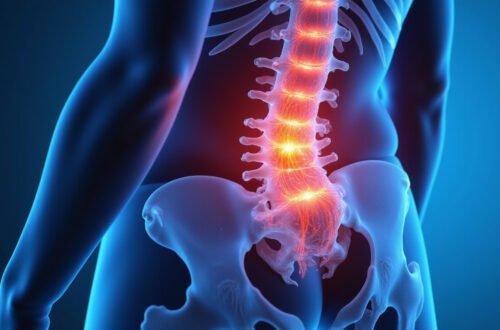Sciatica can be an excruciatingly painful condition that disrupts everyday life for millions of people worldwide. While many assume that sciatica surgery is the only way to alleviate the persistent pain, there are several sciatica surgery alternatives that can offer relief without the risks and recovery time associated with invasive procedures. Understanding these options can empower you to make informed decisions about your health and potentially avoid surgery altogether.
In this article, we’ll explore effective treatments designed to manage sciatica symptoms, promote healing, and improve quality of life naturally and safely.
Understanding Sciatica and Why Surgery Isn’t Always Necessary
Sciatica refers to pain that radiates along the path of the sciatic nerve, which branches from the lower back through the hips and buttocks down each leg. It’s typically caused by a herniated disk, bone spur, or spinal stenosis compressing part of the nerve. Symptoms can include sharp shooting pain, numbness, tingling, or muscle weakness.
Although surgery might be recommended in severe cases, especially if there’s progressive neurological damage or loss of bladder/bowel control, most patients find relief through less invasive means. In fact, many physicians advise trying conservative treatments first, reserving surgery as a last resort.
Top Sciatica Surgery Alternatives to Consider
When searching for sciatica surgery alternatives, it’s important to consider proven treatments that address inflammation, nerve irritation, and muscle imbalances. Here are some of the most effective options:
1. Physical Therapy and Exercise
Physical therapy is often the frontline approach for managing sciatica. Customized exercises focus on strengthening the muscles supporting the spine, improving flexibility, and reducing nerve pressure.
- Stretching tight hamstrings and piriformis muscles
- Core stabilization and lower back strengthening
- Low-impact aerobic conditioning, such as walking or swimming
Consistent physical therapy can reduce pain intensity and improve overall function, sometimes eliminating the need for surgery.
2. Medications and Pain Management
Medications play a role in controlling symptoms, especially during flare-ups. Common options include:
- Nonsteroidal anti-inflammatory drugs (NSAIDs) like ibuprofen
- Muscle relaxants to ease spasms
- Oral corticosteroids to decrease inflammation
- Neuropathic pain medications such as gabapentin
These medicines can provide temporary relief, helping patients participate in physical therapy more comfortably.
3. Epidural Steroid Injections
For patients experiencing severe sciatica pain, epidural steroid injections can deliver anti-inflammatory medication directly into the area around the irritated nerve root. This procedure often results in significant pain reduction and improved mobility, potentially avoiding surgical intervention.
However, the effects may be temporary, and repeat injections might be necessary, making it important to use this treatment judiciously.
4. Chiropractic Care and Manual Therapy
Chiropractic adjustments and other manual therapies aim to restore spinal alignment and alleviate nerve pressure. Techniques such as spinal manipulation, mobilization, and soft tissue massage can complement other treatments.
Many patients report pain relief and increased range of motion following chiropractic care, although it should be performed by licensed professionals experienced with sciatica.

5. Lifestyle Modifications and Ergonomic Adjustments
Simple lifestyle changes often make a significant difference in sciatica symptoms. These include:
- Maintaining a healthy weight to reduce spinal stress
- Practicing proper posture while sitting and standing
- Using ergonomic chairs and workstations
- Avoiding prolonged sitting or standing without breaks
Incorporating these habits supports spinal health and can help prevent sciatica flare-ups, acting as a preventive sciatica surgery alternative.
6. Alternative Therapies: Acupuncture and Yoga
Some patients find relief from alternative therapies such as acupuncture and yoga. Acupuncture stimulates specific points to reduce pain and inflammation, while yoga encourages gentle stretching and strengthening of muscles supporting the back.
Though more research is needed, these therapies can serve as adjuncts to conventional treatment.
Summary: Choosing the Right Alternative Treatment for Sciatica
Deciding on the best sciatica surgery alternative depends on individual symptoms and overall health. A multi-modal approach combining physical therapy, pain management, lifestyle changes, and possibly interventional procedures tends to yield the best outcomes. Here’s a quick checklist to guide your choices:
- Start with conservative care such as physical therapy and medication.
- Incorporate lifestyle and ergonomic modifications.
- Consider injection therapy if pain is severe and persistent.
- Explore complementary options like chiropractic care or acupuncture.
- Monitor progress closely and consult a spine specialist if symptoms worsen.
Remember that most people with sciatica improve within a few weeks to months without surgery (source: Mayo Clinic).
FAQ About Sciatica Surgery Alternatives
Q1: What are the most effective non-surgical treatments for sciatica?
A1: Physical therapy, NSAIDs, epidural steroid injections, and lifestyle modifications are among the most effective sciatica surgery alternatives, often used in combination for best results.
Q2: Can sciatica go away without surgery?
A2: Yes, many cases of sciatica resolve naturally or improve significantly with non-surgical treatments like exercise and medication, making surgery unnecessary for most patients.
Q3: When should I consider surgery for sciatica?
A3: Surgery is generally recommended only if symptoms are severe, progressive, or involve neurological deficits such as muscle weakness, loss of bladder/bowel control, or if non-surgical treatments fail after several months.
Take Control of Your Sciatica Today
If sciatica pain is limiting your daily activities, don’t rush into surgery without exploring the wide range of sciatica surgery alternatives. With the right combination of therapies tailored to your needs, you can manage pain effectively and restore your quality of life.
Consult a qualified healthcare provider to develop a personalized treatment plan that emphasizes non-invasive options first. By taking a proactive approach, you may avoid surgery and return to the activities you enjoy—pain-free. Start your journey toward relief today!






